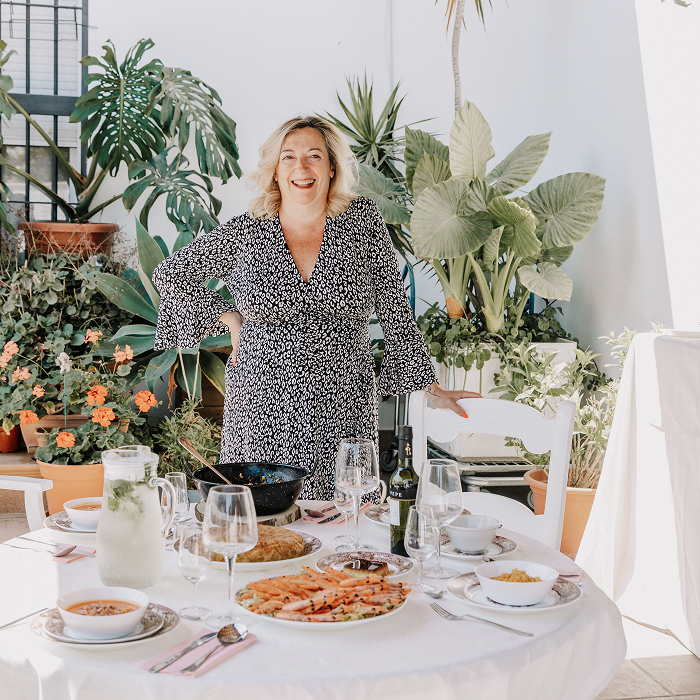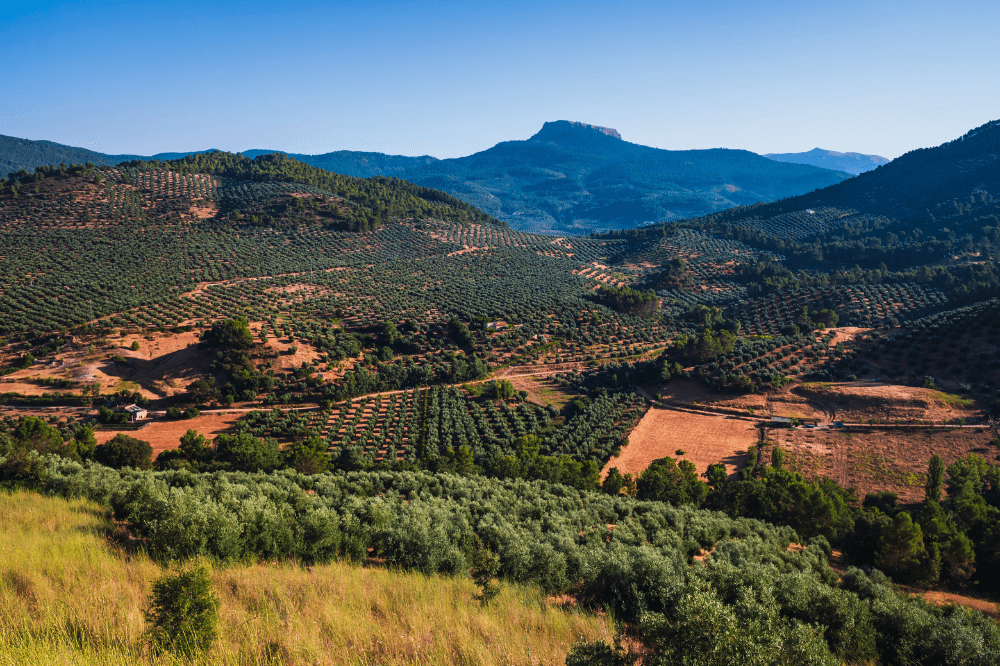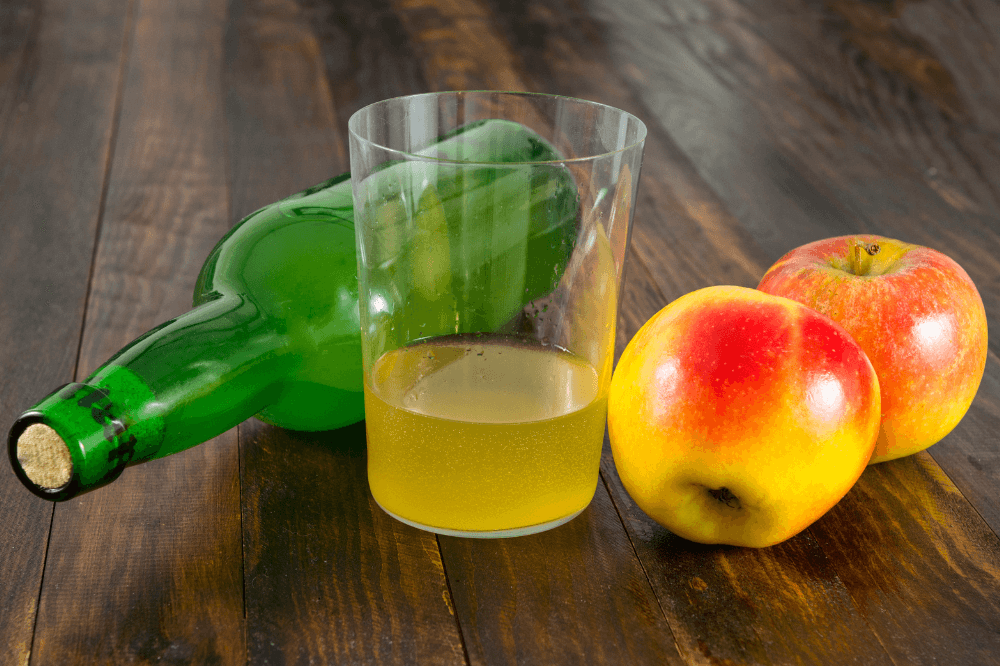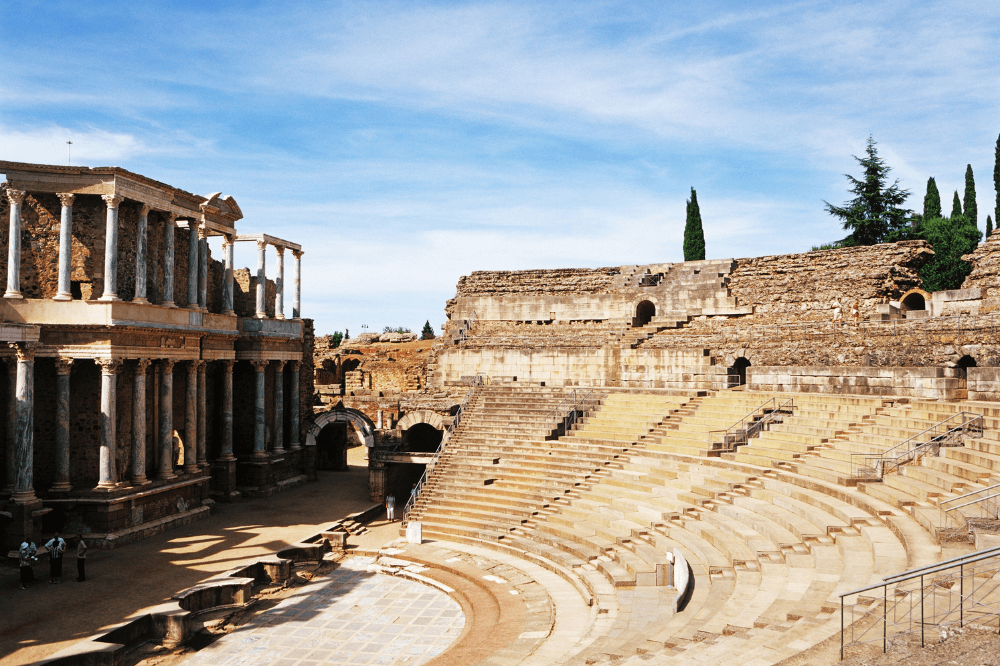If your idea of a Christmas dinner is limited to stuffed turkey and mashed potatoes, get ready for a culinary journey that will change how you see the holidays.
This article is your ultimate guide to navigating Spanish Christmas gastronomy, revealing the secrets of the recipes our families treasure.
From the appetizers that disappear first to the main dishes that vary depending on the region — coastal or inland — and the essential, delicious world of turrones, we’ll show you what’s actually eaten, why it matters, and how it’s prepared.
Get ready to discover homemade, authentic food made with heart — perfect inspiration for your own celebration with a hint of Iberian flavor.
Explore our experiences with local cooks.
Starters
Before sitting down for the main feast, the Spanish tradition invites us to socialize and, above all, to nibble.
These appetizers are the perfect prelude to the banquet, creating a warm atmosphere and prepping the palate for the stronger flavors to come.
Croquetas
If there’s one tapa that truly captures the essence of Spanish cuisine, it’s the croqueta — especially the jamón ibérico croqueta.
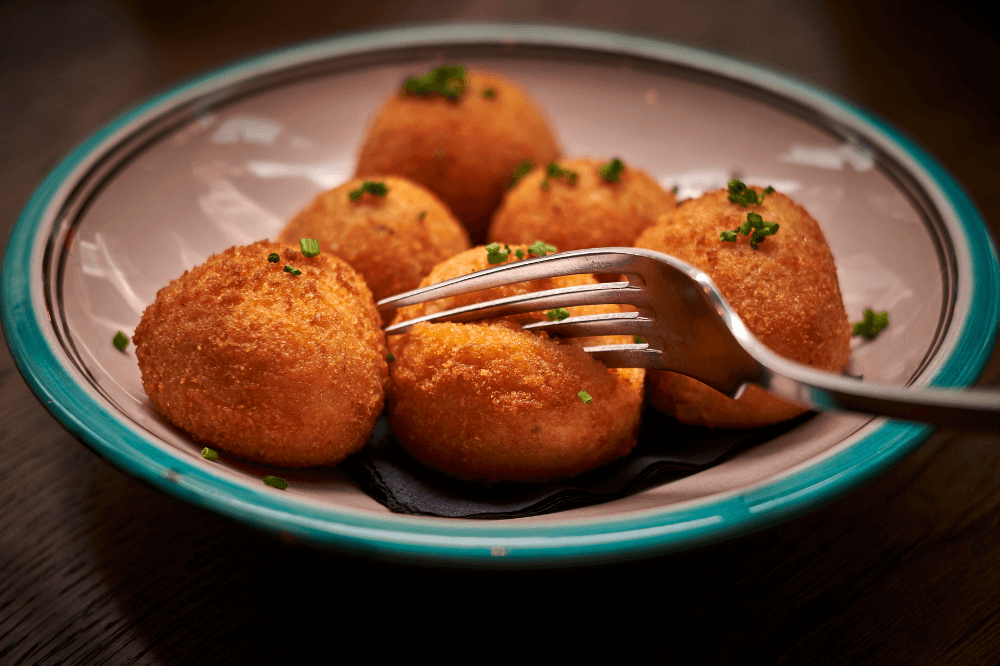
Imagine a small bite, crispy on the outside thanks to the perfect breading, and incredibly creamy, almost liquid, on the inside.
During Christmas, these homemade gems are served on steaming trays and are always the first to vanish from the table.
If a Spanish grandma offers them you one, take it as your official welcome into the family!
Langostinos
Boiled langostinos are a true statement on the Christmas table — a symbol of celebration and prosperity that marks the beginning of the main meal.
They are typically served simply boiled and cold, beautifully presented on large trays with their shells still on.
The key is simplicity, allowing the sea’s flavor to shine: just water with plenty of salt, precise cooking, and rapid cooling.
This process helps preserve their firm texture and sweet, delicate flavor — which sets them apart from smaller shrimp.
Stuffed Eggs
These are based on a very simple idea: hard-boiled eggs, cut lengthwise, with the yolks removed to create a creamy filling.
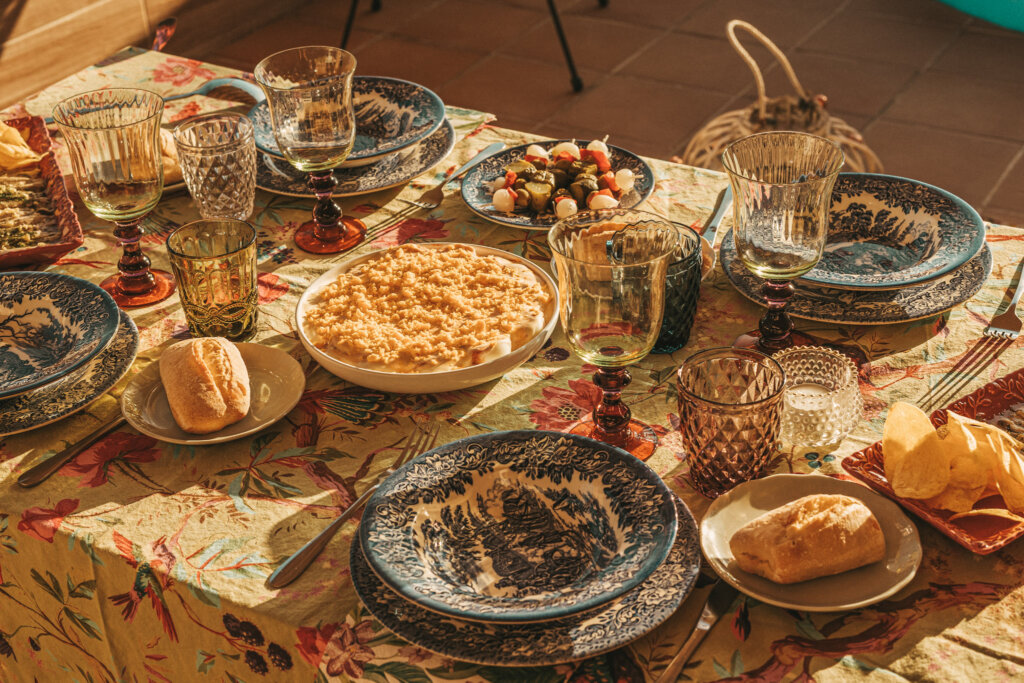
The most popular version usually includes mashed yolk mixed with good-quality mayonnaise and often tuna in olive oil.
However, during the holidays, it’s common to elevate this filling with more refined seafood flavors.
You can add small pieces of cooked prawns or langostinos, finely chopped crab sticks, or even a small spoonful of fish roe or caviar — giving the dish a luxurious and visually striking touch.
Main Courses
Once the appetizers are gone, it’s time to sit down for the highlight of the holiday meal. These are recipes made with time, care, and love — transforming ingredients into dishes we only enjoy during this very special season.
Roast Lamb (Cordero asado or Lechazo)
It’s a cut of young lamb that is slow-cooked in a wood-fired oven or a traditional oven, often in a clay casserole dish.
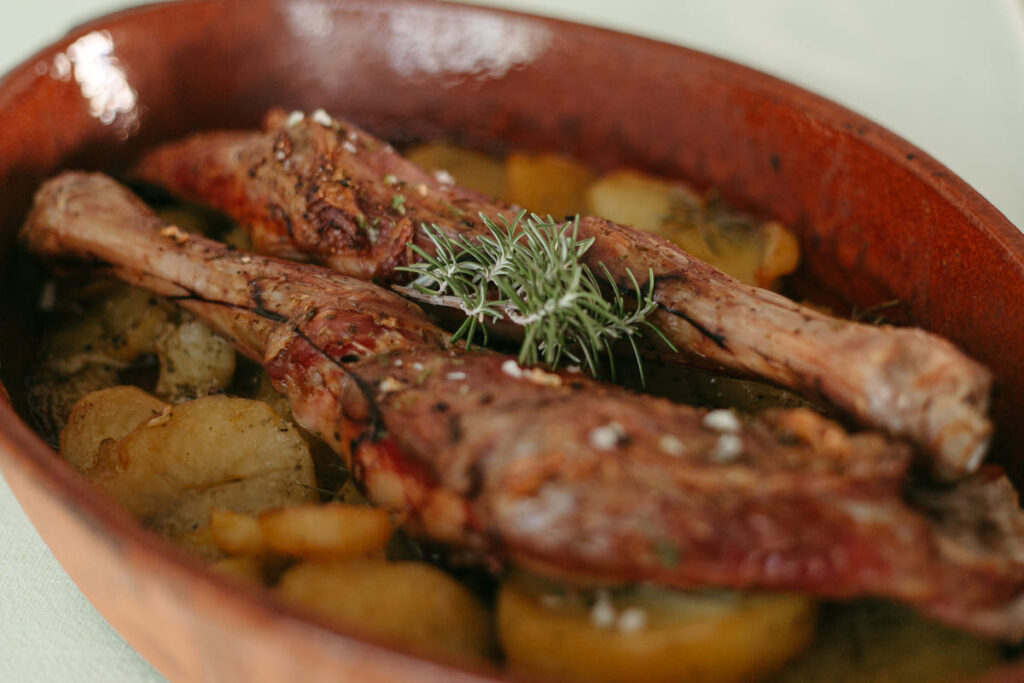
The preparation is quite simple, allowing the flavor of the meat to shine in all its glory.
Traditional Spanish roast lamb with a romantic rooftop terrace in Madrid’s Chamberí.
The magic of this dish lies in its simplicity.
The lechazo is gently rubbed with a bit of fat and seasoned only with salt—and sometimes with a touch of lard and garlic.
During the long roasting process, the meat is basted with a bit of water or white wine so that the skin turns golden and crispy on the outside, while the inside remains incredibly juicy and tender.
It’s traditionally served with patatas panaderas—thin-sliced potatoes that cook slowly underneath the lamb, soaking up all its flavorful juices—and sometimes accompanied by a simple salad.
Butterflied Sea Bream (Besugo a la espalda)
Preparing besugo a la espalda means cooking the sea bream butterflied along the spine, with the head and tail left intact—ensuring a spectacular presentation at the center of the table.
The final and distinctive touch comes just after taking it out of the oven: a hot olive oil dressing is poured over the fish, sizzling with thinly sliced garlic and dried chili pepper (guindilla), infusing the skin with an incredible, slightly spicy aroma.
It’s a light yet luxurious main course, perfect for those who prefer an alternative to roasted meat without giving up tradition or the wow factor.
Picadillo Soup
Sopa de Picadillo is a warm, comforting dish that plays a key role in Andalusian celebrations and in other parts of southern Spain.
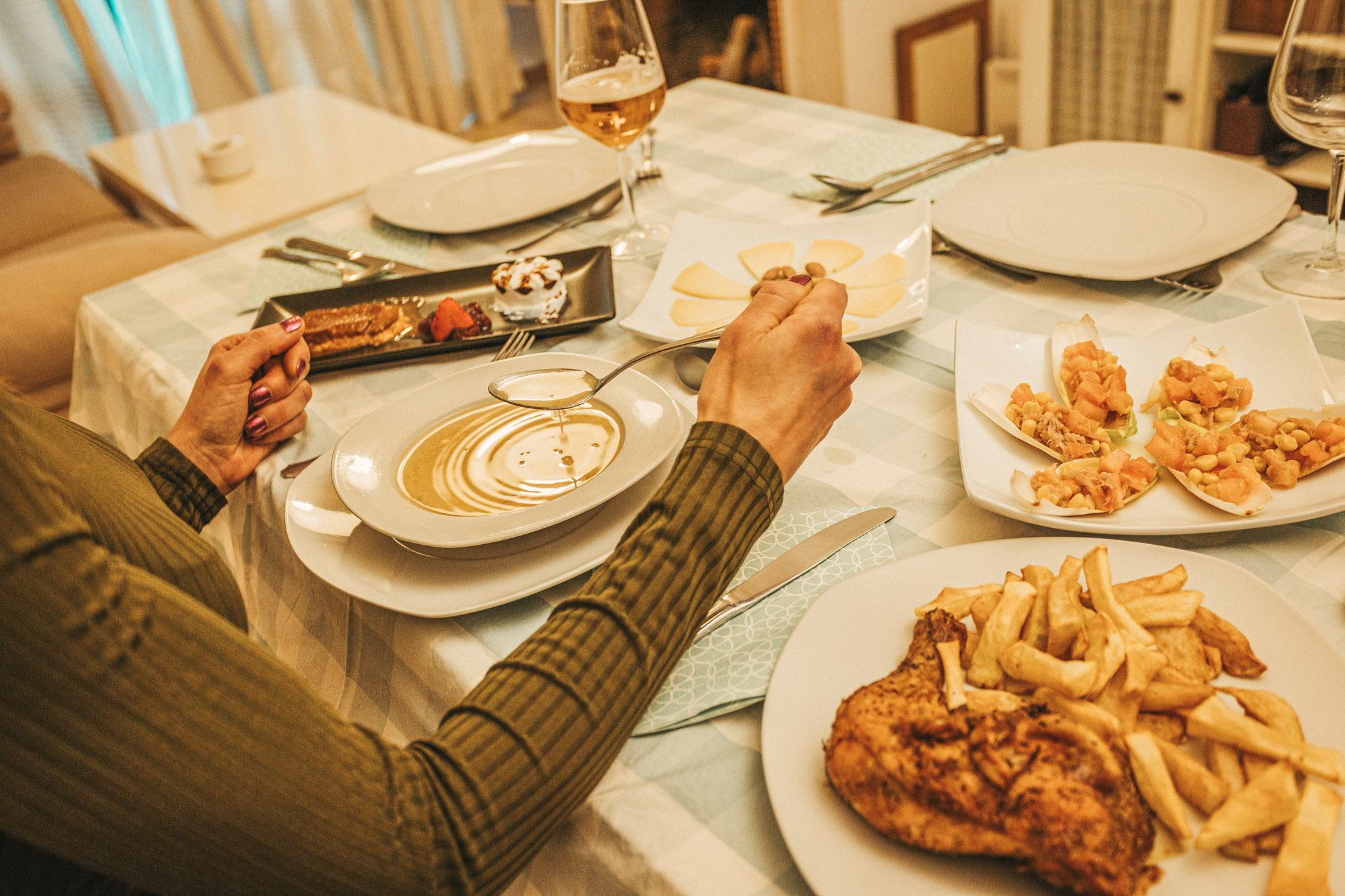
Its base is a rich broth made well in advance using hen or chicken, cured ham, and often beef bones.
The broth is carefully strained to obtain a golden, fragrant, and concentrated liquid that captures the essence of its flavor.
What truly makes this soup special is the picadillo—the finely chopped ingredients added just before serving.
Authentic flamenco dining experience in Granada
These include the meat and ham used to make the broth, often accompanied by chopped hard-boiled egg and, occasionally, a touch of fresh mint (hierbabuena).
It’s served piping hot, sometimes with a splash of Sherry wine (Fino or Manzanilla) added at the table to enhance the flavor.
Escudella i Carn d’Olla
Escudella i Carn d’Olla is the most iconic Christmas stew in Catalonia, traditionally served during the Christmas meal—specifically on St. Stephen’s Day, December 26.
It’s more than just a recipe; it’s almost a ritual, divided into two parts.
The first part is the Escudella, a hearty soup made from a rich broth simmered with a variety of meats, bones, and vegetables.
What truly sets the Christmas Escudella apart are the “Pilota” and “Galets.”
The Pilota is a large, elongated meatball made from minced meat and spices, slowly cooked in the broth.
Galets, on the other hand, are large tubular pasta shells, often stuffed with meat from the Pilota before being boiled.
After enjoying the soup, comes the Carn d’Olla—the second course: all the meats and vegetables that simmered in the broth, served on a platter, ready to be enjoyed with simple dressings.
Desserts
Dinner in Spain doesn’t end with the main course; in fact, one of the most special parts of the tradition is the sobremesa—the long after-dinner conversation—where sweets take center stage.
This isn’t about a single dessert, like a cake; the custom is to offer a wide variety of treats that stay on the table for days, inviting everyone to nibble at any moment.
Turrón
If we had to choose just one dessert that represents Christmas in Spain, it would undoubtedly be turrón.
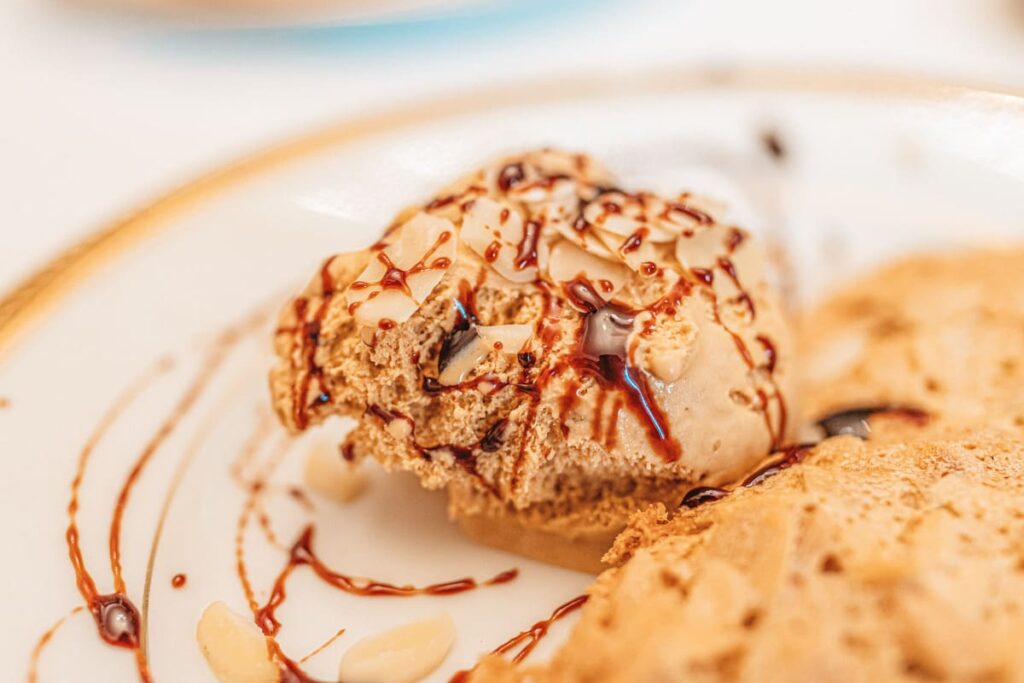
This delicious confection, with its roots in the Valencian Community, is made from honey, almonds, and egg whites, and is as old as the holiday itself.
It’s presented as a rectangular bar, and more than just a sweet, turrón is a whole category on its own, with two varieties that must always be present on the Christmas table.
The first is Turrón de Alicante (also known as hard turrón), a crunchy mix of whole toasted almonds combined with a firm honey and sugar base.
This type requires a bit of effort to bite into due to its solid texture.
Then we have Turrón de Jijona (or soft turrón), which has a smooth and creamy consistency. It’s made with ground almonds blended with honey until it’s almost like a paste.
Its texture is tender and melts in your mouth—perfect for those who prefer something softer.
Today, there are countless varieties of turrón, including the popular toasted egg yolk version or chocolate-based adaptations.
But the classic hard and soft turrones are the ones that truly embody Spain’s Christmas heritage.
Polvorones and Mantecados
Alongside the turrones, polvorones and mantecados are individually sized holiday sweets that fill the trays of every Spanish home during Christmas.
Both are dense, crumbly pastries made from flour, pork lard (which gives mantecado its name), and sugar.
They’re especially famous in the town of Estepa, in Andalusia.
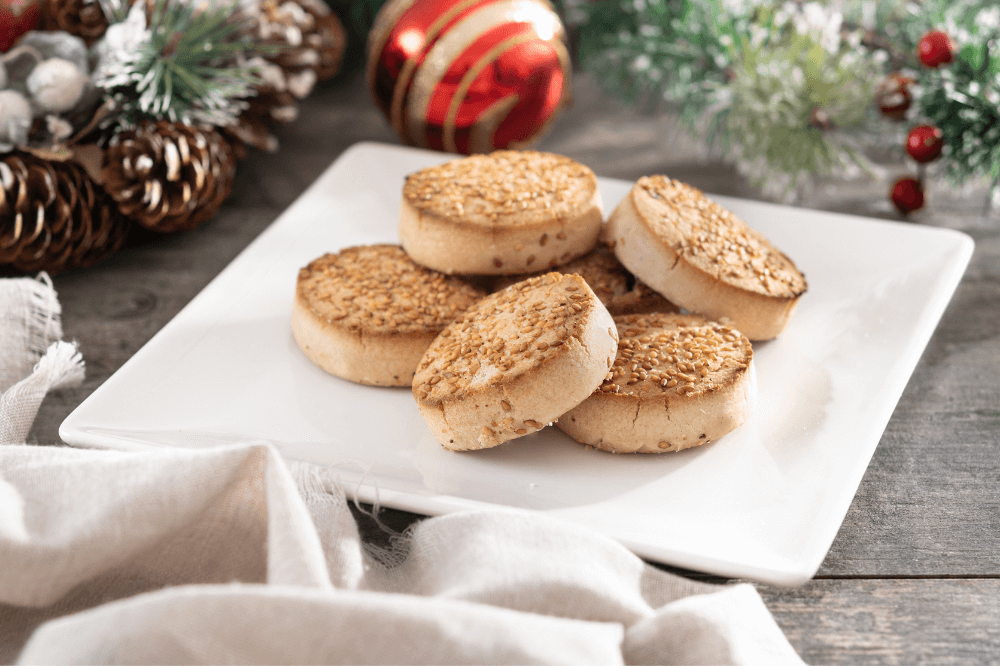
What makes them unique is their extremely soft and sandy texture, achieved by slightly toasting the flour before mixing and by using high-quality lard.
Polvorones are distinguished by their almond content and a dusting of powdered sugar.
They’re so delicate that, traditionally, it’s recommended to gently press them before unwrapping and biting to prevent them from crumbling completely—hence the joke about “compressing” the polvorón by shaking the bag.
Mantecados are similar, but tend to come in more flavors, like cinnamon, lemon, or sesame, and they don’t always include almonds.
Both are highly aromatic and make the perfect companion to coffee or a glass of liqueur after dinner, keeping the sweet spirit of Christmas going well into the New Year.
Join the Table with Sazón The Folk Cook
We’ve just taken a delicious tour of the Spanish Christmas table—from croquettes to the comforting sweetness of turrón.
But the true magic of these recipes lies in the love, patience, and legacy passed down through generations by the expert hands of our mothers and grandmothers.
So what if, this year, instead of just reading about Escudella or Besugo, you could live the tradition for yourself?
Sazón invites you to go beyond the recipe book—we connect you with local home cooks who open their doors and welcome you to their table.
Forget touristy restaurants and join an authentic, unfiltered experience, where you’ll taste the most traditional flavors while living, for a few hours, like a local.
Discover the real flavors of Spain and book your Sazón experience today!


